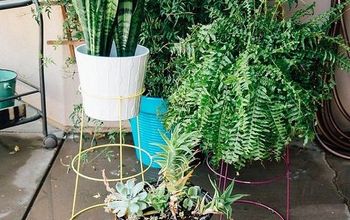How to Grow Lilacs

by
Flower Patch Farmhouse
(IC: blogger)
Lilacs are a glorious start to Spring. They bring a delicious scent to the garden every Spring. Find out how to grow lilacs and get them to bloom!
For healthy lilacs plant a variety suited to your Zone…these heirlooms (Syringa Vulgaris) grow best in Zones 3 – 8 (I have seen some old lilacs flourishing lower down the mountain so this is a bench mark and not a hard and fast rule)
Lilac Planting:
1. Choose a sunny spot (6 hours of sun) if you are in a very hot summer area they may like some afternoon shade
2. Well drained soil (lilacs do not like wet feet)
3. Neutral PH to slightly alkaline soil
4. Spread out the roots when planting your container grown lilac in the ground so dig your hole a lot larger than the diameter of the container it is in, some say to plant it deeper than it was in the container by 2 inches and some say level to the ground around it. You decide on that one.
Lilac Care
1. Do not over fertilize. Spread some compost around the base in late Winter/early Spring and you can add some after they have bloomed or later in summer. If you over feed them you will get lots of green growth but no sweet smelling flowers! (we have snow on the ground in late winter/early spring so nothing is added to them at that time in our neighborhood)
2. The first year keep it watered through the summer, no more than an inch a week, to get your Lilac established then after that be light handed on the water.
3. After your lilac has finished blooming trim or prune to shape it. Don’t wait, if you prune off the new growth that comes soon after the bloom you will sacrifice next years flowers. It is not necessary but to me a good idea to prune back to eye level. What is the point of blooms way over your head and these heirloom lilacs can easily get to 20 feet tall.
When pruning cut out any dead or weak canes, cut out 2/3rds of the suckers coming up at the base, leave 1/3 for future blooming stems. You can actually dig them up and pot them to make more lilacs if you wish, they actually mature faster than taking cuttings and rooting them. Some say to have only about 10 canes per bush for best health.
What if you Lilac refuses to bloom?
This may sound strange but it has worked for so many on different flowering shrubs and fruit trees. Visiting a local nursery I spotted one of the workers whacking the potted lilacs with a rubber hose cut to about a 4 foot length. I had to ask what in the wide world he was doing and he explained he was promoting blooms.
I thought he was pulling my leg but then he explained that by beating the plant (not enough to break through the bark) it makes it think it is dying, goes into survival mode and in turn flowers.
On larger trees and shrubs you can use a wood stick or 2 x 4 lumber, again not hitting hard enough to do damage to the trunk but hard enough to wake it up. As he was explaining it to me I remembered my uncle had told me to do that to some tomato vines I have that were not producing though they had all the right conditions. Obviously a tomato plant has a much more tender base and I did not use a 2 x 4 but I did use a bamboo cane to give it a good beating and it worked. From then on it bloomed, set fruit and was productive.
So if your Lilac is not blooming try and give it a good beating about the base and see what happens! You might be pleasantly surprised.
You can root lilacs from cuttings. Click over to the website post and you will find a link showing you how!
Enjoyed the project?

Want more details about this and other DIY projects? Check out my blog post!
Published March 6th, 2017 12:05 PM
Comments
Join the conversation
2 comments

































Frequently asked questions
Have a question about this project?